How Would You Like Your Graphic Design
Working with graphic designers for the first time can be intimidating. You're essentially handing over your entire brand identity and reputation to a complete stranger, but risky as it sounds, it's the smartest thing you can do from a business perspective.
As long as you know how to properly collaborate with your graphic designer, your final product will deliver beyond your wildest expectations. But don't forget: this is a creative field, so things work a little differently.
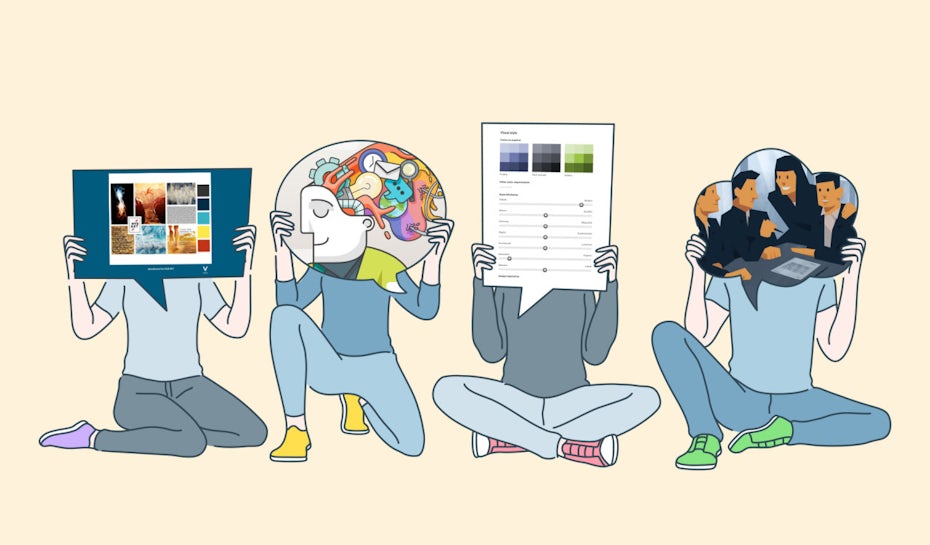
Here's our list of the 7 best tips for working with a graphic designer. Just pay attention to these and we can assure you that you'll get the best possible product for your time, energy and money. We've also asked some of our Top Level designers to weigh in with their opinions so you can hear what works best—straight from experienced designers themselves!
1. Show, don't tell.
—
Practically every client wants a design that "pops." But what does that mean? You might be thinking, "I'll know it when I see it," and your designer is probably in the same boat, so why not show instead of tell?
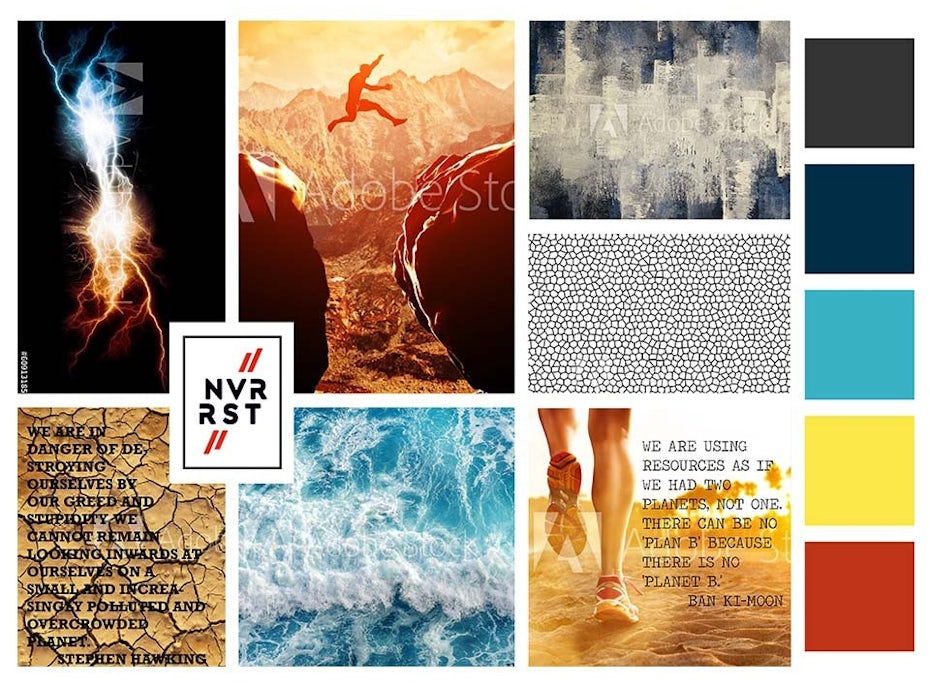
Rather than using words, show your graphic designer what you want with visual examples. Collect samples of your desired style from other logos, websites, ads, signs, t-shirts, business cards and more. Sure, a picture is worth a thousand words, but visuals also give your designer a chance to catch all of the artistic nuances and techniques that you like so they can incorporate them into your project.
You don't have to stop at closely related examples either. Branch out and get creative. Show a designer your favorite Van Gogh painting as inspiration for your logo. Or an 18th-century newspaper clipping to demonstrate what font you want on your website. If the designer can see what you want, it's often more useful than a verbal explanation.
If you have time, consider building a mood board filled with images, colors, icons and typography to portray what you're looking for. Mood boards are a great way to start solidifying a visual style.
2. Figure out your needs first
—

There are two types of clients: those who know what they want and those don't. Guess which one ends up satisfied more often.
The better you understand what you want, the better your designer can give it to you. That includes both the creative end (visual style, color scheme, subject matter) as well as the business end (your target market, your destination, your main takeaway). Naturally you'll want to leave a lot of the creative decisions up to the designer (that's why you're hiring them!), but there are some business and branding choices they just can't make for you.
Also, make sure you nail down the scope of the project early. If you want an adaptable logo or a series of projects instead of just one, figure that out sooner rather than later. You can communicate a lot of these preliminary details with a well-constructed creative brief, which is the basic outline of a project.
Feel free to use our creative brief template to start building your own.
Real world tip from designer Mky:
Gather your thoughts and make a list of all the things that you need.
"Before contacting the designer about your new project, gather your thoughts and make a list of all the things that you need. This will help the designer in defining a fair schedule and a price. Not doing so and just piling up new tasks as you go will create chaos (remember: you are not the only person your designer is working with)."
3. Start by agreeing on details
—
While you and your designer search for common ground in the creative aspects, don't neglect the concrete details. Deadlines, schedules, revisions, deliverables, payment… You can avoid so many problems by addressing these at the start rather than the end of your project.
Set reasonable timeframes for projects.
Graphic designer Pinch Studio says: "It's important to set reasonable timeframes for projects, since short deadlines can be a recipe for disaster."

Neither party really enjoys these kinds of nitty-gritty negotiations, but they're worth bringing up. Getting definitive answers enables a more efficient design process, one where you don't get caught up halfway through arguing about money.
That holds true for the minor details as well. Things like the final file format might not seem important, but if overlooked they could lead to annoying or even disastrous consequences.
Real world tip from designer Mky:
Show up with feedback or resources at the agreed upon time.
"Remember that deadline you and your designer agreed on? Well, that's not just for the designer, but for you as well! If you expect your designer to deliver files on time, please show up with feedback or resources at the agreed upon time as well, instead of vanishing for weeks. Sure, life happens, but send them an email and a heads up if there's a change of plans!"
4. Phrase feedback as problems, not solutions
—
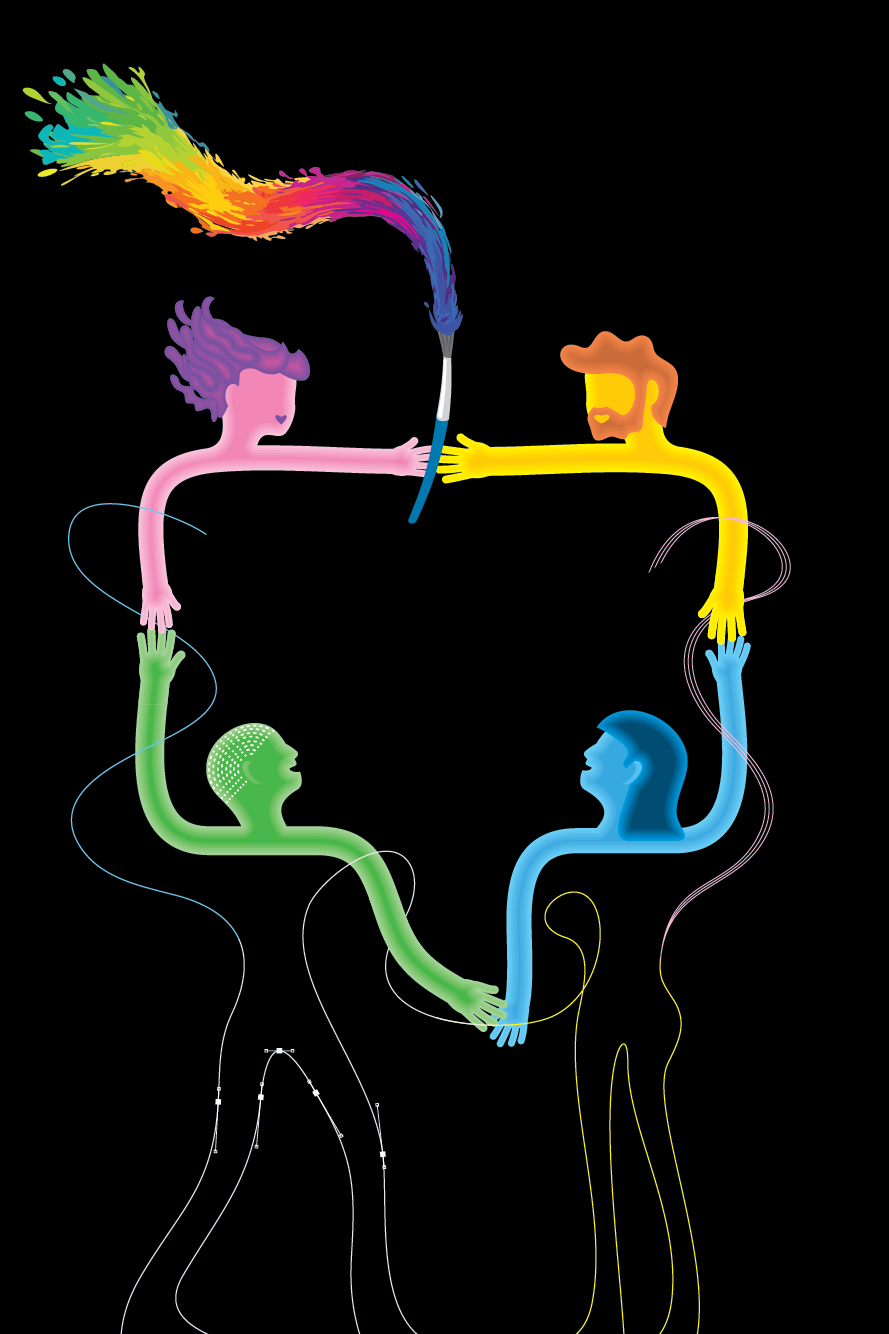
Even the best designers don't always get it right the first time. Most projects involve at least one round of feedback, but if you don't articulate your criticism well, you're looking at two, three, four or more rounds before you're happy with the results.
One expert tip to move this process along quickly is to phrase your feedback as problems, not solutions. In other words, clearly describe what's bothering you, but don't direct how to fix it.
For example, let's say you're evaluating a new redesign of your website. Good feedback might be something like, "We need a call-to-action or next step on the home page." Not so good feedback might be "Put a big, red button right there!"
Your designer is an expert in design. By telling them what to do, not only do you ignore their expertise, but you also cut off the opportunity of them thinking up a solution that's even better than yours. When it comes time for feedback, point out what you need, but don't make the revisions for them.
Real world tip from designer svart ink:
Their energy and enthusiasm gives me energy too.
"I wish all of my clients would know that their energy and enthusiasm gives me energy too. A lazy and uninterested client who expects a designer to do wonders with just five words of feedback probably doesn't know what they want. Clients like that often disappear and give up on projects if they don't like the direction of the first two concepts. I wish they would know that the more they talk and the more they are engaged, their designer will be too."
5. Welcome designers into your team
—
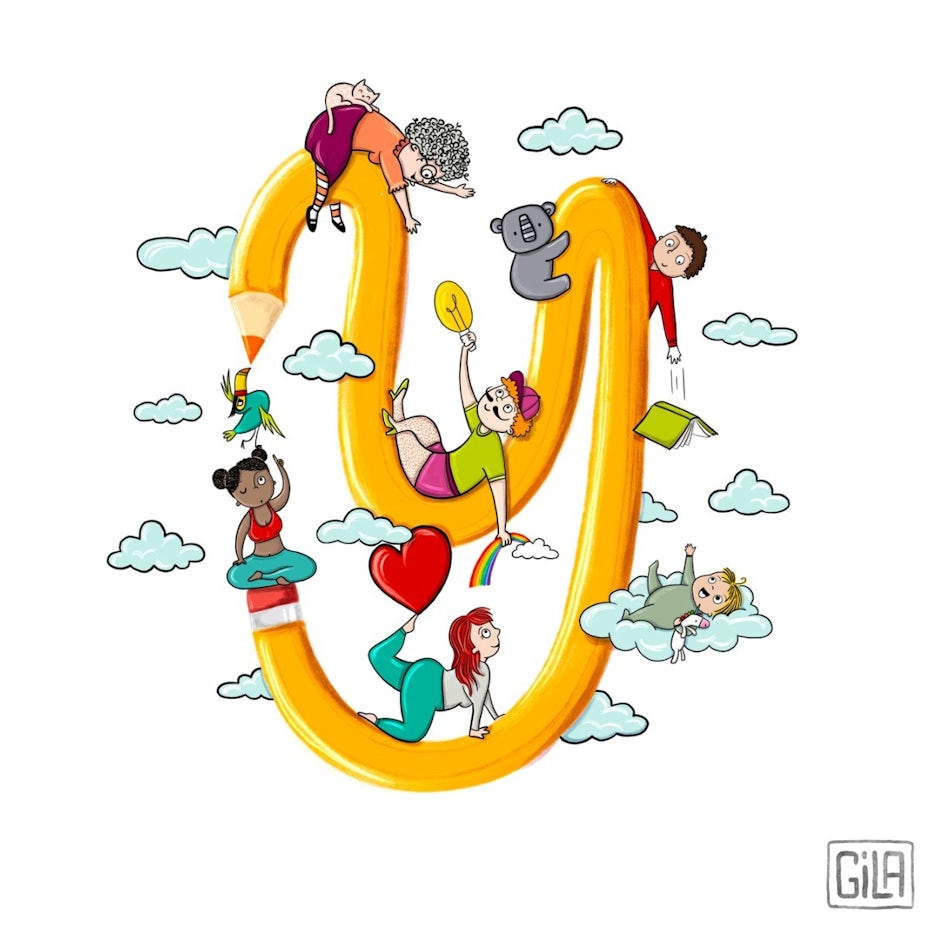
Want to be on friendlier terms with your freelance graphic designer? Try treating them more like a friend or colleague. Freelancers are often viewed as utilities or removeable assets, but by welcoming them into your group, you can make them part of the team.
That starts with how you communicate. Speak to them with the same respect as your coworkers. If you need to cancel a meeting, give them ample notice.
In addition, give them some of the same liberties as regular employees. This means access to company documents; things like market breakdowns, sales analytics, website data and marketing personas can be incredibly useful for graphic designers to hone in on your business goals.
Likewise, share your team's contact information so they can get in touch with the right people. If you're the single liaison between the designer and the rest of the company, your workflow is bound to get clogged.
6. Overexplain
—
Usually, overexplaining is a bad thing, but when it comes to abstract concepts, every little bit helps. In addition to showing them visual examples, give them as much background as possible.
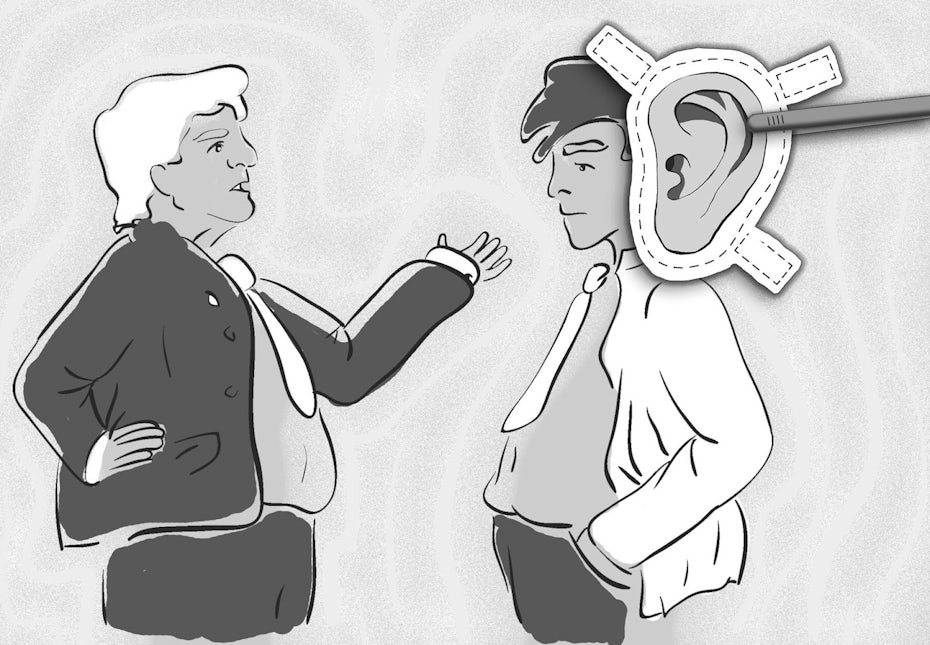
Avoid using vague terms and err on the side of explaining too much than too little. In addition to project parameters and creative styles, also share with your designer your motives and business goals. What is the intended outcome of this particular project? How does it fit into your business as a whole? Professional designers understand this area better than you think, and knowing these details can help them think up even more effective design solutions.
Real world tip from designer Mky:
Too much information is always better than not enough information.
"Too much information is always better than not enough information. Most likely the designer you're working with will send you a ton of questions about your business and the design you're looking for, so they can better understand what you need and create something as close to it as possible. You may not always know what you need, but be open to answering all those silly questions. If you don't care enough to dissect the topic, why would you expect your designer to care?"
7. Keep an open mind
—
When you hire a graphic designer, you're not just paying for their artistic skill, you're also paying for their knowledge and expertise. When they say a new idea is better than an old idea, keep an open mind.

It's common for clients to have a fixed vision of what they want in their head, and they hire designers simply to bring that idea to life. But graphic design is a robust and intricate discipline, and chances are the designer knows something about your vision that you don't. The idea in your head may not be as feasible as you think, or even more likely, your designer's idea might actually check off more boxes than your original.
Trust your designer's ability. Of course your insight is valuable, but it's better to blend your ideas with those of an expert than to stubbornly cling to a second-rate concept. What your designer brings you may not be how you pictured it. But that might be a good thing!
Real world tip from designer Pinch Studio:
"The more the client knows, the better the flow is. There is no magic that can make the process easier other than patience from both sides and some guidance from us designers to overcome the barriers."
A little trust goes a long way
—
Trust. It's necessary, but difficult to do with someone you've never worked with before. But once you know how to better work with graphic designers, you'll be ready for a creative collaboration you can trust to deliver results that bring your ideas to life.
Work with a talented design pro!
Our designers can create the perfect new look for your brand.
How Would You Like Your Graphic Design
Source: https://99designs.com/blog/crowdsourcing/working-with-graphic-designers/
Posted by: johnwasion.blogspot.com

0 Response to "How Would You Like Your Graphic Design"
Post a Comment